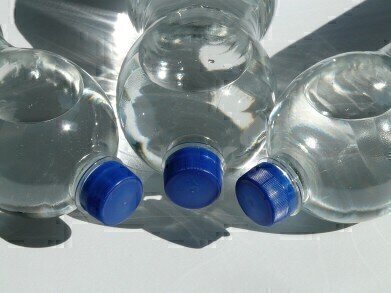Water/Wastewater
Can Plastic From a Bottle Transfer to the Water?
Sep 13 2022
The manufacturers of bottled water have generated a very lucrative industry out of the idea that the H2O we source from bottles is cleaner and healthier than that which comes out of our taps. However, that notion might not be 100% accurate, with a recent study demonstrating that microplastic pollution is rampant in bottled water throughout the globe.
According to the research, 93% of the bottles sampled contained synthetic polymer particles, known more commonly as microplastics. Although the full effects of microplastics on the body’s internal organs are not yet understood, the fact that they are infiltrating our bodies with such regularity and ease through the simple act of drinking water from a bottle is surely cause for concern.
Alarming research results
The study, which was conducted by sustainability researcher Sherri Mason at Penn State Erie in the USA, tested 259 bottles of water from 11 of the most widely available brands across the globe. 93% of those tested contained microplastics in some concentration, with some even showing particles that were visible to the naked eye.
On average, each bottle contained 325 pieces of microplastics per litre of liquid. However, one sample taken from a Nestlé Pure Life bottle was found to contain a whopping 10,000 microplastic particles per litre. A spokesperson for Nestlé claimed that their own rigorous testing protocols did not reveal concentrations of the pollutant above trace level.
Tap water preferable?
Of course, microplastic pollution is not just confined to bottled water. Our rivers, lakes and oceans are rife with the contaminant, while we are only just getting to grips with understanding our exposure to airborne microplastic pollution. Further research by the same author has revealed that plastic particles are found in tap water, sea salt and beer, as well.
However, bottles are of particular concern because the most commonly found type of plastic is polypropylene, which is used to make bottle caps. This suggests that most contamination occurs during or after the bottling process – and the results of Mason’s other studies bear this out. On average, bottles are roughly twice as likely to contain plastic particles than tap water samples.
Impacts unclear
The fact that microplastics can accumulate in the body is certainly unsettling, but the scientific community is yet to discover tangible proof of the long-terms effects that ingestion can cause. That evidence may never fully surface, since the ethical implications of exposing at-risk members of the population (such as pregnant women) would prevent it.
Having said that, there is a growing body of correlational evidence linking microplastic consumption with health hazards. It could contribute to obesity, diabetes and heart disease, as well as certain types of cancer and neural complications like attention deficit disorder. There are also suggestions from laboratory experiments on animals that the pollution could be passed onto unborn foetuses too, further raising concerns.
Digital Edition
AET 28.3 September 2024
September 2024
Business News - ENVEA announces acquisition of APAQ Group - SICK and Endress+Hauser sign strategic partnership - Efforts to curb gas flaring intensify amid environmental concerns Air Monito...
View all digital editions
Events
WEATHER • CLIMATE • WATER / EARTH OBSERVATIONS / GREEN ECONOMY
Oct 29 2024 St. Petersburg, Russia
Oct 30 2024 Hong Kong
Nov 05 2024 Toronto, Canada
Nov 05 2024 Rimini, Italy
Nov 06 2024 Ho Chi Minh City, Vietnam

.jpg)

















